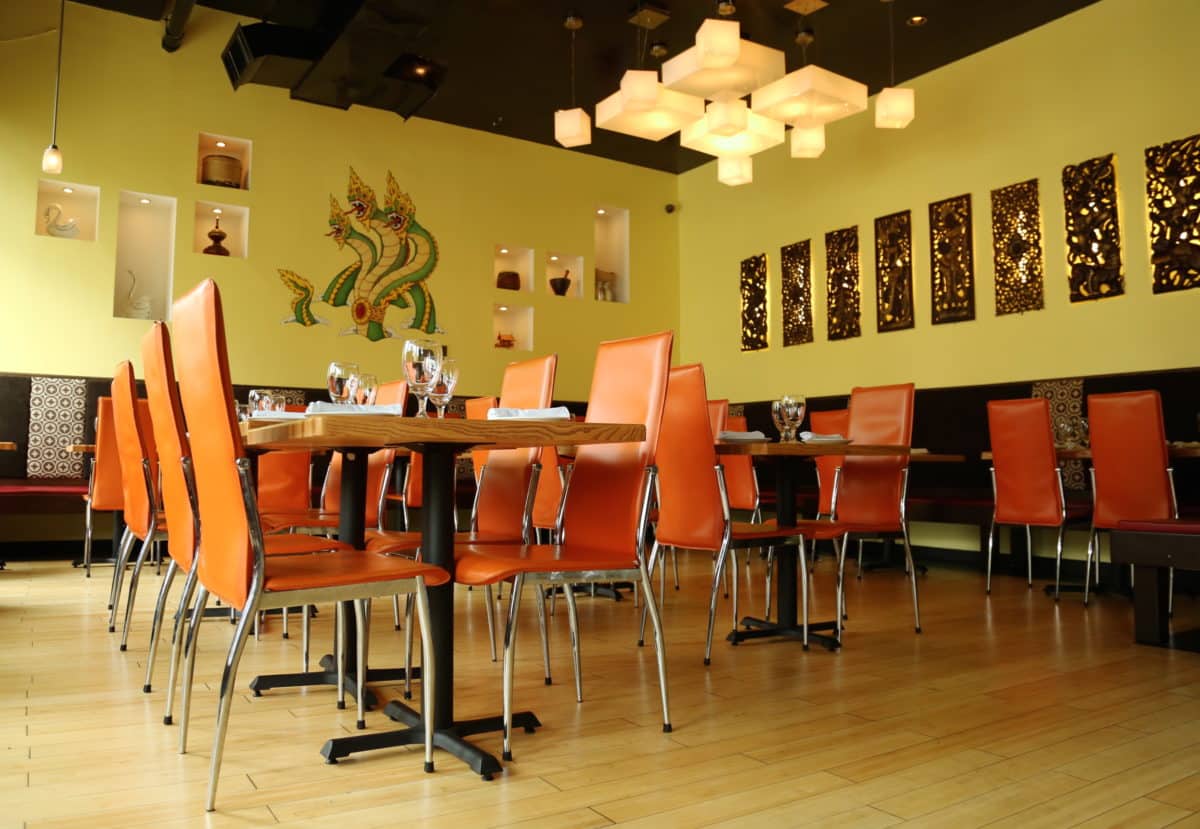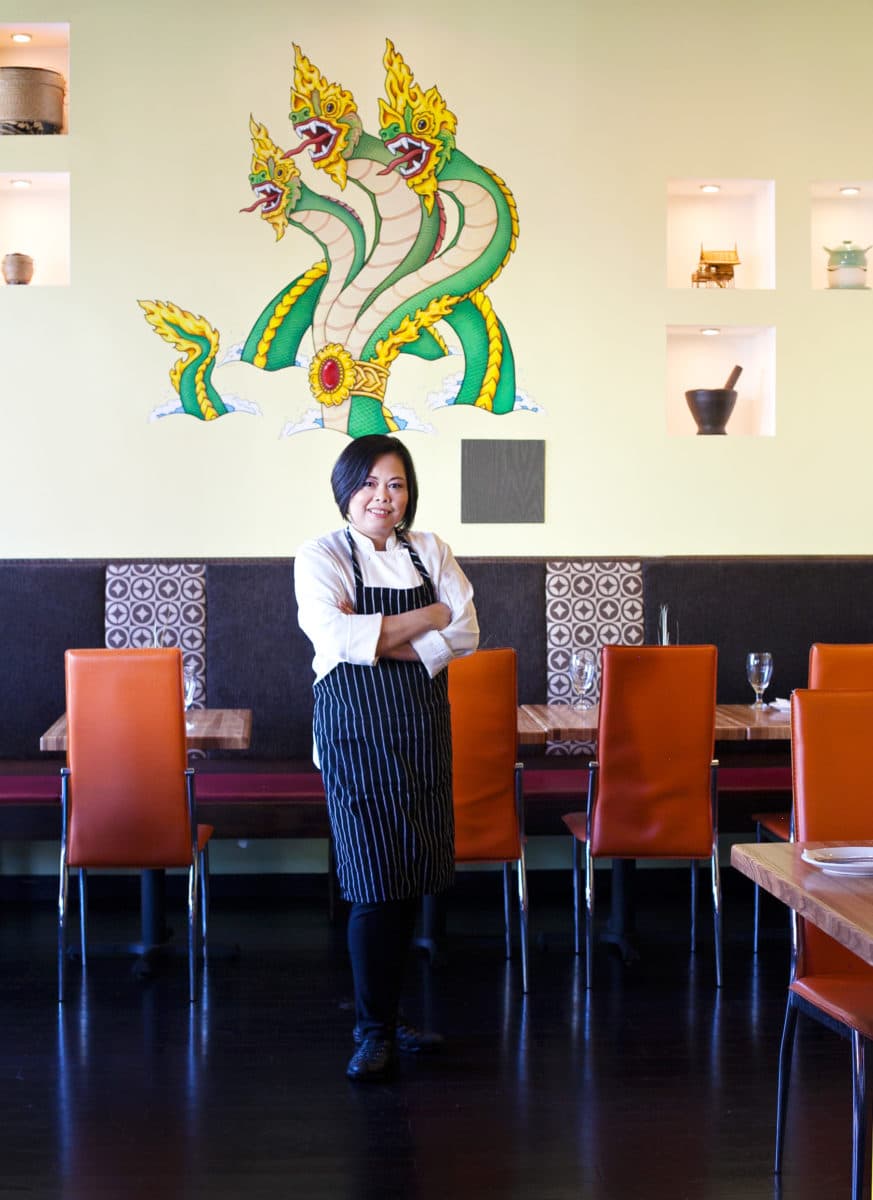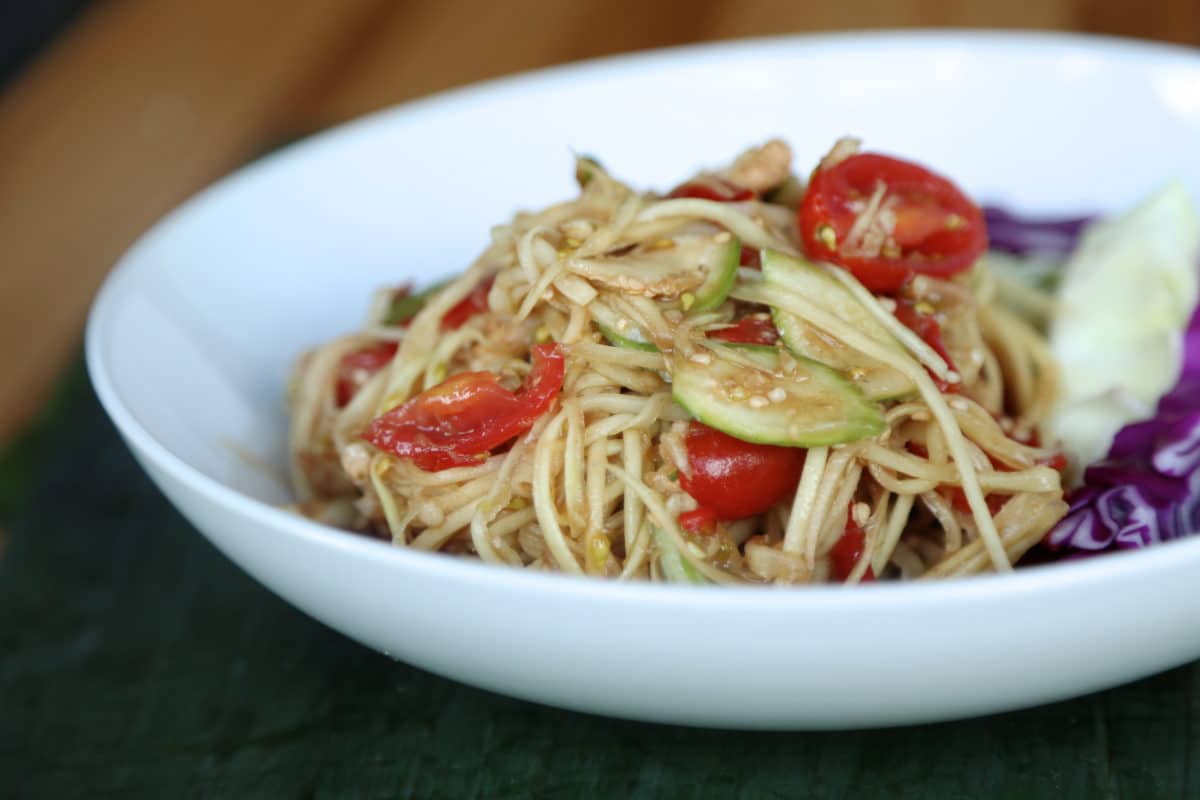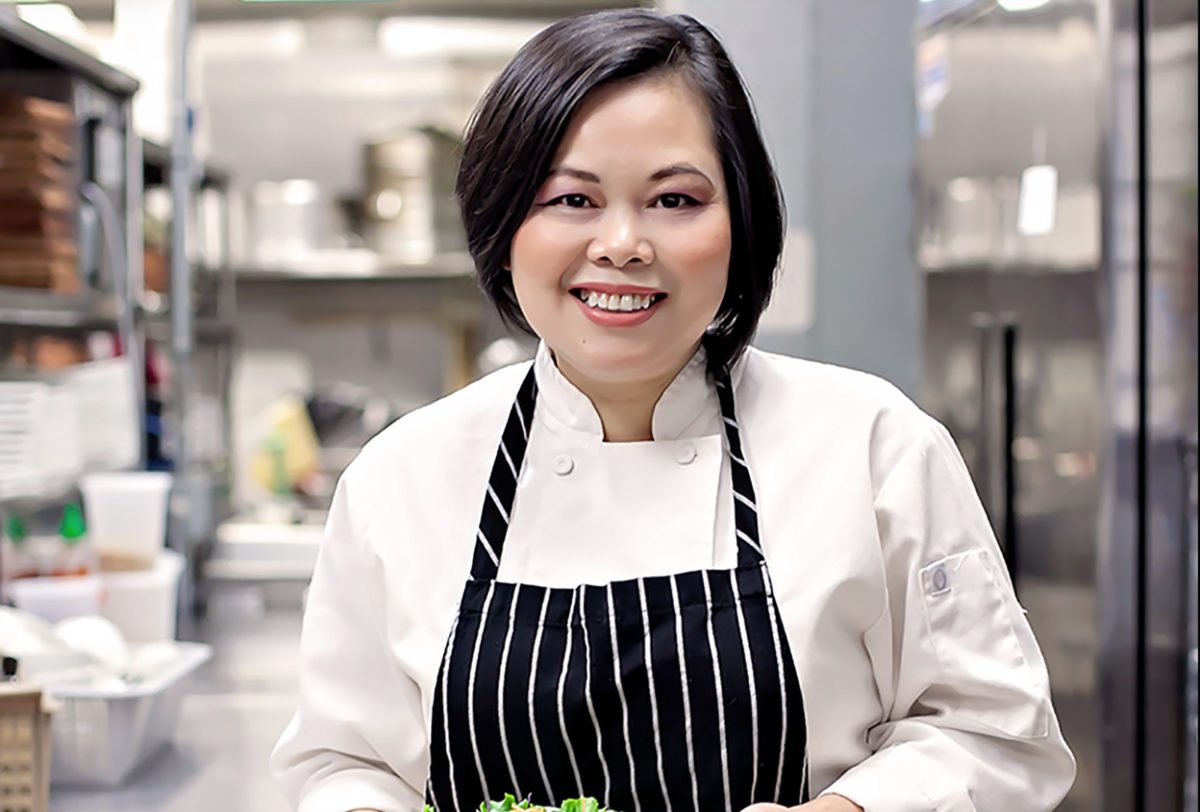Chef Seng Luangrath sits facing me while light streams into her restaurant. Behind her are enormous windows that face 14th Street Northwest, a heavily trafficked road that runs north to south through the Washington, D.C. neighborhood of Columbia Heights. The room is airy, with creamy yellow walls and wooden tables with orange vinyl chairs. Laotian artifacts sit in cubbies set into the far wall: a mortar and pestle, statues of graceful birds, and a large rice basket called a “thip khao,” from which the restaurant takes its name.


Chef Seng smiles when asked about what started her cooking career. “Being in Laos we start doing our chores very, very young. My first lesson was sticky rice, which is a Lao staple. We have sticky rice like bread and butter. It’s the most important thing that any Laotian can learn to cook.” In Laos, and across Asia, rice is an essential part of every meal and not simply a side dish, and a thip khao is not just a serving vessel. While Seng’s restaurant offers diners sticky rice in individually-sized baskets, Lao families share from one large communal thip khao. “My grandmother had twelve children and everyone lived in the same house,” says Seng. When you eat at Thip Khao, you too are partaking of a large meal, a family meal.
Cooking runs in the family. As we speak, Chef Seng looks around her restaurant and points out her son, Bobby Pradachith, a CIA-trained chef who previously worked at Jose Andrés’ high-concept restaurant Minibar. Pradachith is going over papers behind the bar, which was recently revamped to include beer and wine as well as cocktails. Seng is intimately involved in every aspect of the restaurant. She built this business herself, and it’s not surprising she would want to know how everything works. Unlike many chefs, including her son, Seng’s path to owning one of the hottest Asian restaurants in D.C. did not follow a traditional path.
“My mom is the oldest daughter of the family. She would help my grandmother with cooking and stuff, but when she went to college she ended up being away, and also when she started working she wasn’t cooking so much anymore, so it got transferred to me.” From the age of seven, Seng would get up as early as 5:30 in the morning in order to start cooking with her grandmother. Chef Seng says that this is common in Lao households, where girls are often expected to help their parents and grandparents with tasks around the house, including cooking.
At the age of 12, Seng and her family left Laos as refugees because of political unrest stemming from the Vietnam War. They arrived in Thailand and stayed in different refugee camps for two years. They were eventually transferred to a U.S. military base in the Philippines for an additional six months before emigrating to California. Living on base offered Seng and the other refugees the opportunity to learn English, and taught them skills such as how to shop in a grocery store, a task that might seem commonplace but was confusing for those who had never set foot inside of a large indoor market.
It was from the elder refugees in the camps that Seng further developed her skills as a cook. “During those years I learned from my neighbors, the people surrounding us, and that’s how I learned different recipes from different parts of the country. In Laos there’s a north region, a south region, and a central. I picked up those recipes from the women I was cooking with.”
Chef Seng arrived in the United States at age fifteen, but she didn’t have her first experience leading a commercial kitchen until the age of 41 when she became the chef and owner of Bangkok Golden, a Thai restaurant in Falls Church, Virginia. Her only prior commercial kitchen experience had been a few months spent helping a friend who had opened a Thai restaurant in Vienna, Virginia. At Bangkok Golden, it was when Seng started serving Lao dishes as specials that the restaurant began to be celebrated. Says Seng, “About eight or nine months after I opened Bangkok Golden, a food critic came and wrote a story about it. That’s how the name got out and we got slammed with tons of customers.”
It was a significant transition for her. For many years Seng’s husband, Boun, was a contractor, doing small-scale construction projects and installing floors and carpets. Seng would occasionally cook for the companies with whom he would contract. This expanded to catering holiday parties for an office where some of her family worked, and cooking for a small Lao wedding. “People were amazed, they’d never had food like that before.” Laughing, Seng continued, “The company that we had a contract with, the office staff would call me or come to me and say, ‘Seng, you’re in the wrong business.’”
Recognizing her success as a cook, Boun suggested she take time off from the contracting business to further develop her cooking. Chef Seng spent the next three years doing research and developing recipes out of her home. “I used my small kitchen at home to do a lot of recipe testing. At one point my husband was like, ‘You need to move your bed downstairs to the kitchen, because maybe then you’ll go to bed,’ because I was staying up until 2 o’clock in the morning.”

Seng’s recipes are one of the reasons Thip Khao has become a destination. In 2015 Bon Appetít named it one of the top 50 new restaurants in America. The recipes are uncompromising in their authenticity, and Seng refuses to change things to suit those with an unadventurous palate.
“When the food critic showed up at Bangkok Golden, I remember it was the summer of 2010, he showed up and told my server, “Go into the kitchen, tell the cook in there, ‘Cook up something as he or she would eat it. Don’t compromise any dish.’ Ever since that day it always stuck in my mind. I can not, I will not compromise any of the dishes at all. I will do them authentic and true, the true Lao cooking.”

All the dishes at Thip Khao are traditional Lao dishes save for Pak Nam, a salad of crispy fried watercress, shrimp, tamarind sauce, mango, green apples, and cashews that is Chef Seng’s personal creation. This remains true for their alternative (and, for some, challenging) “Let’s Go To The Jungle!” menu, where diners can find items such as ant eggs, pork blood cakes, steamed pig ears, and snakehead fish, and where the spiciness can be dialed up to “phet e’lee” (“Lao Hot”), a level of heat that even a spice-loving American diner would likely find barely tolerable.
Chef Seng’s menu is not meant to alienate, however, nor is it intended to scare people away. For Seng Luangrath, her best food is the food that she learned how to make as a child in Laos and Thailand. Thip Khao is as good as it is because it doesn’t cut corners, and because Chef Seng wants her customers to have a good time. In fact, the restaurant has just been remodeled and her staff is being trained to better describe to customers dishes that may be unfamiliar to them. That being said, if you have a problem with the smell of the fermented fish sauce that’s been cooking for days on a stove in the back, you may not be ready for true Lao cooking.
The dining room is peaceful as Chef Seng and I finish our conversation in the early moments before they open for their newly-offered lunch service, and is quiet save for the pop music playing over the stereo system. Says Seng, “When I get my hands into something, I want to make it happen. I just try, try, try.” ![]()
First published December 2015
